What an odd year for me and music. By that I don’t mean that it was an odd year for music (which it may have been), or an odd year for me, necessarily (though I might say that was true, as well). It was an odd year for me and music, together. For the first time in about twenty years, I wasn’t around the music “scene” every day, 24/7. All of the new music that I encountered, I had to seek out, after reading about it online or in the news, or it was recommended to me by friends and former colleagues…you know, the way that music discovery is supposed to happen. But, as a result, I was exposed to far less new music than in the past.
On July 1st, I wrote a post describing my five favorite CDs of the year, so far. On reflection – a very brief reflection – those five recordings are five of the best that I heard all year, and I rank them as such.
1. Kathleen Edwards – Asking for Flowers
2. Fleet Foxes – Fleet Foxes
3. Ry Cooder – I, Flathead
4. Teddy Thompson – A Piece of What You Need
5. Mason Jennings – In the Ever
Beyond those five albums, there are few that stood really tall for me, perhaps because those five got so much play that there wasn’t much more air time allotted for new CDs. But of the handful of other new recordings that I did spend quality time with, here are the ones that I intend to go back to again, and soon:
6. Toumani Diabate – The Mande Variations
7. Bob Dylan – Tell Tale Signs: The Bootleg Series, Volume 8
8. Q-Tip – The Renaissance
9. Roy Hargrove – Earfood
10. JJ Grey & Mofro – Orange Blossoms
11. Mavis Staples – Live: Hope at the Hideout
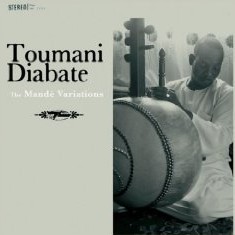

Toumani Diabate’s album, all solo kora (though Diabate’s intricate fingerwork makes one instrument sound like several), is graceful and dreamlike. I was introduced to him through his prior release, Boulevard de l’Independence, which used a full, and large, band to exhilarating effect, while often leaving Diabate’s individual performance buried in the mix. The solo setting of The Mande Variations allows Diabate room to stretch. I liken the album to Keith Jarrett’s Koln Concert; it also has the ability to whisk you away.
The following track is a good example of the overall tone of the album. Notice the Ennio Morricone quote at the beginning…gotta love that!
[audio:Toumani_Diabate___Cantelowes.mp3]
“Cantelowes” (2008), by Toumani Diabate
Dylan can do no wrong with me these days. I like the rough and tumble Dylan of Modern Times and the spooky, ethereal Dylan of Time Out of Mind. (Truth be told, I enjoy every Dylan, save the “Froggy Went A-Courtin'” Dylan, and the Grateful Dead Dylan. And you and I both know that there are an awful lot of Dylans, so that’s a darn good average.) Tell Tale Signs compiles two discs worth of previously unreleased material from the last decade or so. With so much material, you might expect a disjointed collection of oddities, but the flow between tracks sounds natural and unforced. I found the listening experience quite moving (and moody, in the most positive sense).
[audio:Bob_Dylan___Huck’s_Tune.mp3]
“Huck’s Tune” (2006), by Bob Dylan
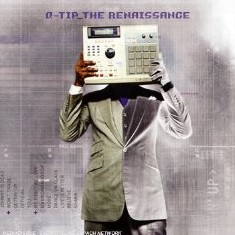
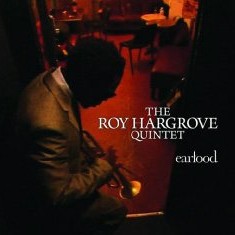
I’m not a rap or hip-hop connousieur, but I do like a handful of urban artists. I was introduced to The Renaissance through a suggestion by a friend on Facebook, which seems funny to me, but the world is indeed getting smaller – or “closer,” more accurately – through a myriad of electronic media. I am surrendering. Anyway, I really dig the beats and rhythms and overall ingenuity of the soundscape on the Q-Tip album. Though I haven’t penetrated the lyrics yet, I am pretty confident that he’s not singing about knifing ho’s or the size of his “gun,” so the sonic mix is a pleasure with no guilt at all.
[audio:Q-Tip___Johnny_Is_Dead.mp3]
“Johnny Is Dead” (2008), by Q-Tip
Hip-hop-wise, I also really wanted to like the new Streets album (Everything Is Borrowed) which, while infinitely better than his previous release, couldn’t hold a candle to his first two CDs. Sorry to say, I had to jump ship.
On the front and back covers of Earfood, trumpet and flugelhorn player Roy Hargrove is styling in a crisp suit and sunglasses, emerging from the shadows of what appears to be a late night club, looking like Miles Davis for all he’s worth. In his recording output, Hargrove shifts back and forth between a more traditional jazz style and an urban mode (for which he records under the moniker The rH Factor). I am a fan of the more traditional Hargrove, and two of my favorite jazz albums, Parker’s Mood and Roy Hargrove with the Tenors of Our Time, are cut from that cloth. Earfood follows in that traditional vein here, with a live texture that glides between suggestions of an after hours hard bop jam session to a romantic palm court reverie. About half of the numbers were penned by Hargrove.
[audio:Roy_Hargrove___Rouge.mp3]
“Rouge” (2008), by Roy Hargrove
Among other jazz releases this year, I also enjoyed French trumpeter Erik Truffaz’s Arkhangelsk. Truffaz enlisted British singer-songwriter Ed Harcourt to contribute lyrics and vocals to three tracks, a crossover effort that worked nicely (and gave me my Ed Harcourt fix for the year).
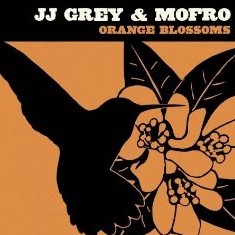
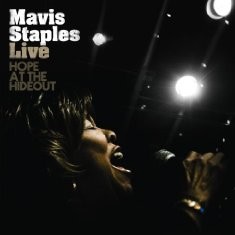
Orange Blossoms is a constant joy in the car. It’s great driving music. Whenever I’m listening to it, I feel like I could take a left turn (or a right turn, depending on which direction I’m headed on I-20) and cruise on down to FLA.
[audio:Mofro___Orange_Blossoms.mp3]
“Orange Blossoms” (2008), by JJ Grey & Mofro
I discovered Mavis Staples’ We’ll Never Turn Back a year late. Happily, I got served a double dose of it with the late 2008 release of a live concert recording, Live: Hope at the Hideout, which spotlighted many of the songs from the studio album. Collections of songs associated with the civil rights struggles of the late 20th century, both albums are packed with the energy and sweat you would expect to find in a packed evening church service somewhere in Mississippi, and maybe in Alabama, too. “This Little Light of Mine” is re-invented as a bump-and-grind on the live album, and Ry Cooder adds an irresistible choogling guitar riff to the studio album’s version of “99½ Won’t Do.”
[audio:Mavis_Staples___Freedom_Highway.mp3]
“Freedom Highway” (2008), by Mavis Staples
Each year there are always old recordings being heard anew in an improved format, or discovered for the first time (whether or not this was the year of re-release…the “rules” be damned!):
12. Graham Nash – Songs for Beginners
13. Cat Stevens – Mona Bone Jakon
14. The Manhattans – Sweet Talking Soul 1965-1990
15. The Lyres – On Fyre
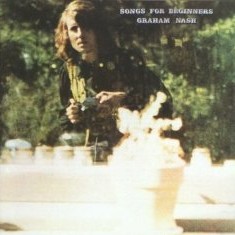
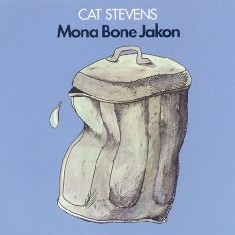
Brentski has already written on this weblog about the glut of fine re-issues released this year. I quite agree with him. One of my favorite re-discoveries this year was Graham Nash’s 1971 Songs for Beginners, remixed and sounding as if it were just recently committed to tape. I had a 45 rpm vinyl single of “Chicago” as a kid, but the flip side got much more play on my record player. It was “Simple Man.” At the time, I had no idea that it was a Joni Mitchell break-up song; I just thought it was a mighty moving melody. It sounds even better now.[audio:Graham_Nash___Simple_Man.mp3]
“Simple Man” (1971), by Graham Nash
Songs contains a coda to “Chicago” which, oddly, sounds as if it was tailor-made for the political happenings of the past year, with its chants of “We can change the world” and “Yes, we can!” I don’t think that Graham Nash would disapprove of that…haven’t we seen him out on the stump for Barack Obama?[audio:Graham_Nash___We_Can_Change_The_World.mp3]
“We Can Change the World” (1971), by Graham Nash
I can’t rave wildly enough about the amazing sound quality of this re-issue. I had passed it by as self-indulgent solo fluff as a young man, probably preferring the solo albums by Stephen Stills, with a mindset that one former member of a group had to be preferable to the others. What an utter, utter fool I was, to paraphrase Sir Noel Coward. Listen to the beginning moments of “Better Days” to hear what I’m talking about: at about 0:35, the band kicks in and you’d think they were in the same room with you.
[audio:Graham_Nash___Better_Days_(edit).mp3]
“Better Days” [edit] (1971), by Graham Nash
Sounds pretty good for an mp3 file, eh?
I was thrilled when A&M re-issued what I considered the two finest Cat Stevens albums – Tea for the Tillerman and Teaser and the Firecat – as Deluxe Editions this past Fall. That got me listening to some of his later albums again, in reassessment mode. I realized that I had never heard the album Cat had released immediately prior to those two, Mona Bone Jakon. After a quick download, I found myself listening to it repeatedly. I now count it among my favorites of his. You probably know “Trouble,” which was featured in the film Harold & Maude, but there are even better gems than that on Mona Bone Jakon.
[audio:Cat_Stevens___Maybe_You’re_Right.mp3]
“Maybe You’re Right” (1970), by Cat Stevens
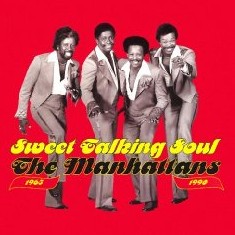

Philly Soul was another genre that I played a lot this year. The three-disc retrospective of the music of The Manhattans, Sweet Talking Soul 1965-1990, was one of my favorite new retro-R&B discoveries, along with Harold Melvin & the Blue Notes’ Wake Up Everybody and The O’Jays’ Ship Ahoy. And before you are tempted to point out my error: yes, I am aware that The Manhattans are not from Philadelphia. But did you know that they are from Jersey City, not New York City? Gotcha.
[audio:Manhattans___It_Feels_So_Good_To_Be_Loved_So_Bad.mp3]
“It Feels So Good To Be Loved So Bad” (1977), by The Manhattans
On one of the cassette tapes I found in my basement this summer labelled “Fred FM,” was a song by The Lyres entitled “Help You Ann.” I really liked hearing it again, but I no longer had the compilation CD it had been pulled from, so I went online in search of an entire disc of Lyres material. I found On Fyre, which collects the band’s recorded output from 1982. It rocks! and displaced JJ Grey’s Orange Blossoms as the disc du jour in the dashboard player of my truck. Here’s a sample of it, with my best wishes for a new year filled with great new tunes and enlightening musical discoveries.
[audio:Lyres___The_Way_I_Feel_About_You.mp3]
“The Way I Feel About You” (1982), by The Lyres


4 responses so far ↓
1 Brentski // Dec 29, 2008 at 8:38 AM
Great list! And thanks for the shout-out!
I’d like to report that music and I had a similarly weird year. So…when do the next EJ Deluxe Editions come out, again?
2 kristi // Dec 31, 2008 at 2:03 PM
Hey Fred,
I really enjoyed reading your list!
3 spitballarmy // Dec 31, 2008 at 4:57 PM
Thanks, Kristi! What were your favorites this year?
4 Blair Cox // Jan 5, 2009 at 12:36 PM
Here’ my top ten list for 2008:
Duffy-Rockferry
Lizz Wright-The Orchard
Melody Gardot-Worrisome Heart
John Mellencamp-Life Death Love & Freedom
Tift Merritt-Another Country
B.B. King-One Kind Favor
James Carter-Present Tense
Paul Thorn-A Long Way From Tupelo
Teddy Thompson-A Piece Of What You Need
James Morrison-Songs For You, Truths For Me
It’s always difficult for me to select a top ten list of favorite recordings. I could easily have substituted Kathleen Edwards (Asking For Flowers) for Tift Merritt, Bob Dylan (Tell Tale Songs: Bootleg Series Vol. 8 ) or John Hiatt (Same Old Man) for John Mellencamp and Roy Hargrove (Earfood) for James Carter. I cut James Hunter’s The Hard Way and Steve Winwood’s Nine Lives from my mid-year list even though I think both albums are terrific. Willie Nelson’s and Wynton Marsalis’ collaboration, Two Men With The Blues, or Susan Tedeschi’s all original offering, Back To The River, could easily be my favorite blues album for 2008 instead of B.B. King. Eli “Paperboy” Reed, a young artist from Boston, cut a great retro-soul album, Roll With You, that sound like a 1960’s recording from Memphis or Muscle Shoals. Other recommendations for 2008 include:
Shelby Lynne-Just A Little Lovin’
Allison Moorer-Mockingbird
Al Green-Lay It Down
Ray LaMontagne-Gossip In The Grain
Amos Lee-Last Days At The Lodge
Solomon Burke-Like A Fire
My only disappointment for the year was Randy Newman’s Harps And Angels.
Leave a Comment